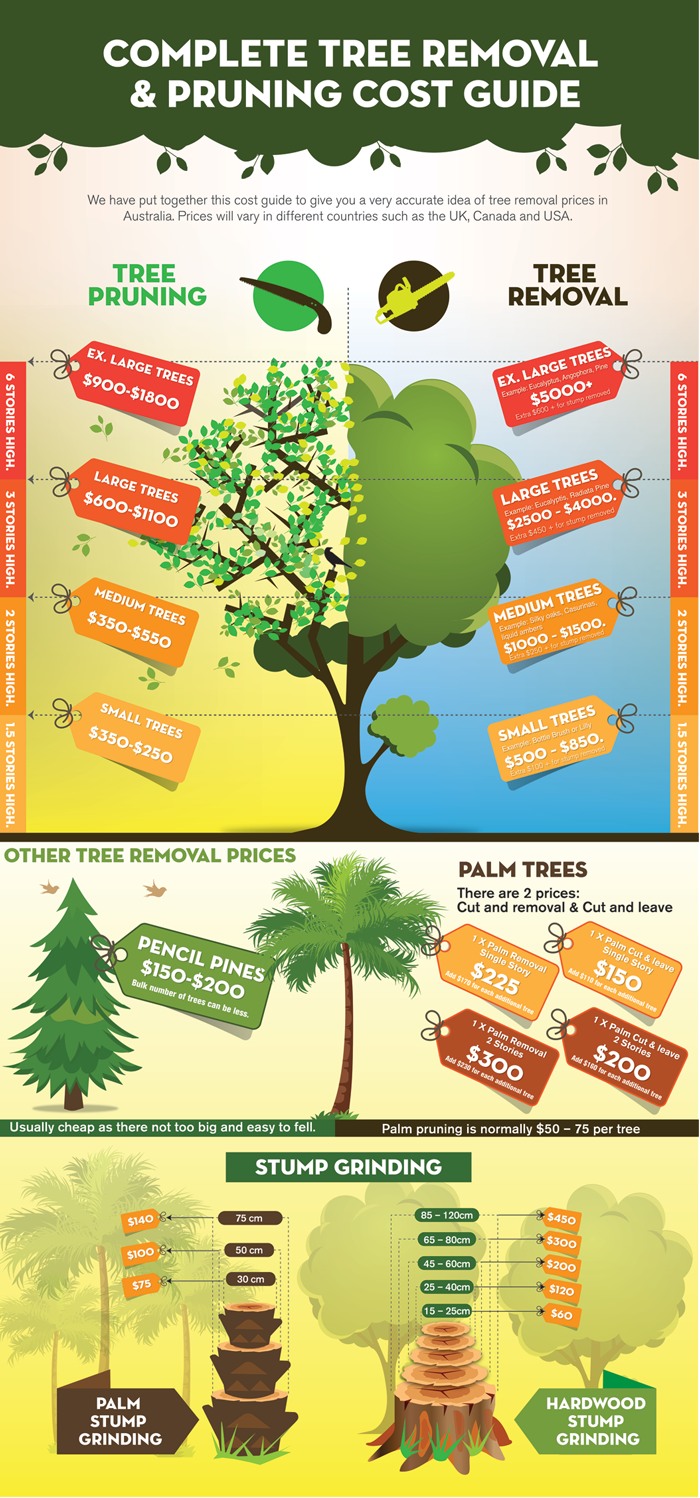Mastering Tree Trimming: Crucial Strategies For A Growing Landscape
Mastering Tree Trimming: Crucial Strategies For A Growing Landscape
Blog Article
Short Article By-
When it comes to developing a landscape that thrives, mastering the art of tree pruning is a must. Think of having the ability to shape your trees with precision, guaranteeing their vigor and beauty for many years to come. By finding out the important techniques for appropriate cuts, timing, and architectural training, you hold the secret to a growing exterior area that will certainly excite all that experience it. Yet just how do these trimming methods absolutely influence the wellness of your trees and the overall landscape visual?
Appropriate Pruning Cuts for Tree Health And Wellness
When it involves maintaining the wellness of your trees, making proper trimming cuts is necessary. Wrong cuts can cause illness, insect problem, and general tree decrease. To guarantee the vigor of your trees, constantly start by utilizing sharp, tidy devices to make accurate cuts.
Begin by identifying the branch collar, an inflamed location where the branch connects to the trunk. Reducing just outside the collar helps promote appropriate healing and minimizes the risk of infection. Prevent leaving stubs as they can invite parasites and illness into the tree.
Keep in omni tree service to make cuts at a minor angle, sloping away from the trunk, to avoid water from merging on the wound. In addition, remove any dead, harmed, or going across branches to improve air circulation and sunlight infiltration.
Timing and Frequency of Pruning
To keep the wellness and structure of your trees, understanding the ideal timing and frequency of trimming is essential.
The best time to prune trees is usually throughout the dormant period in late winter or very early springtime. Trimming during this duration helps promote new development once the tree begins budding in the spring.
Nevertheless, some trees, like spring-flowering ones, are best trimmed right after they finish flowering to avoid removing next year's flower buds.
Normal pruning is important, but the regularity depends on the tree types and its development rate. For most trees, a yearly assessment to eliminate dead, diseased, or crossing branches is suggested. Youthful trees might call for even more regular trimming to establish a solid structure, while fully grown trees might only require maintenance pruning every few years.
Prevent pruning during the autumn when conditions are a lot more conveniently spread, and refrain from hefty pruning throughout the summer season when the tree is actively expanding.
Training Young Trees for Framework
For developing solid and healthy and balanced trees, training young trees for ideal structure is crucial. By forming a tree when it's young, you established the structure for a sturdy and visually enticing fully grown tree.
Begin by recognizing the central leader, which is the main upward-growing branch. Motivate the main leader's development by pruning away completing leaders, aiding the tree create a solid main trunk. In addition, remove any kind of branches that expand internal or downward, as they can create structural problems as the tree expands.
a knockout post is necessary to space out lateral branches evenly around the trunk to promote well balanced development. As the tree matures, continue to monitor its development and trim as required to maintain its shape and framework.
Appropriately educated young trees are much less likely to develop weak crotches or overcrowded branches, minimizing the danger of damages during tornados. Investing time in training young trees will certainly repay with a magnificently structured and durable tree in the future.
Final thought
Now that you have understood the essential techniques of tree pruning, your landscape is on its method to growing. By using sharp tools, making accurate cuts, and effectively timing your trimming sessions, you are making sure the health and long life of your trees. Bear in mind to routinely evaluate and maintain your trees to keep them prospering. With your newfound understanding, your landscape will certainly remain to grow magnificently for several years to come. Keep up the great work!
